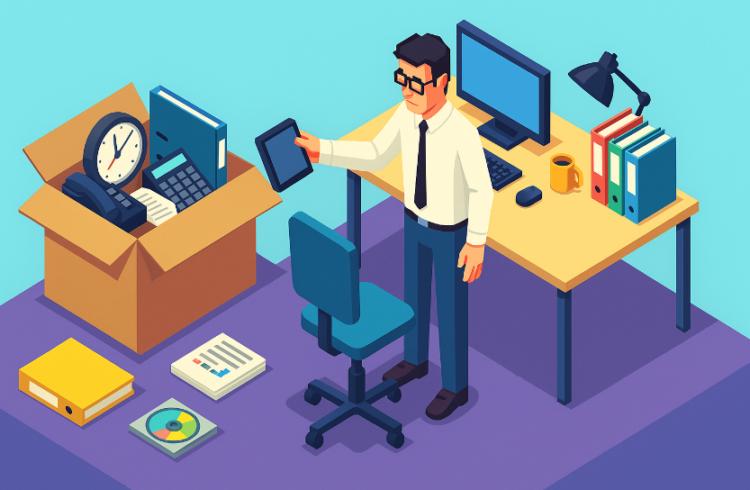Unlike the traditional decluttering frenzy that ends with ten black bin bags and a vague sense of guilt, this approach flips the script. Instead of focusing on elimination, you focus on selection. You clear the workspace not by subtraction, but by intentional curation. And in an office, where function and focus matter more than feng shui, this method can transform not just your storage cabinets but your entire workflow.
Start with Zero, Not Minus One
Rather than going drawer-by-drawer asking “Do we really need this novelty hole puncher shaped like a penguin?”, reverse decluttering starts with nothing. Think of the space as already cleared. Now — what absolutely needs to be brought back in?Begin with categories, not locations. Don’t start with the desk — start with “items that help us do our jobs”. Your shortlist might include laptops, monitors, pens that work (a radical concept), and documents relevant to ongoing projects. These are your “green-lit” items.
You’re not asking if something is useless — you’re asking if it is actively useful. This small shift changes the mental calculus. Suddenly, dusty binders full of 2017’s compliance training feel less like sacred archives and more like the dead weight they are.
Where the Real Value Lives
In most offices, 20% of the items do 80% of the work — and the other 80% sit around like interns during lunch hour. The Reverse Decluttering Method is your chance to identify that golden 20%. Not by guessing, but by observing what gets used and what collects dust.You might find the best-performing tools aren’t the flashiest. That ancient stapler everyone complains about might actually be the only one that’s survived three office moves. Keep it. The trendy wireless mouse still in its packaging? Not earning its keep.
This method also reveals where your budget has gone — and how little of it translates into daily utility. Five whiteboards, but only one ever used? Seven branded clipboards from a trade show? These aren’t just clutter — they’re budget fossils.
Mental Clarity Isn’t Just a Nice Bonus
A cluttered office can sap energy before the first email is even opened. When every surface is shouting for attention, focus becomes a scarce resource. Reverse decluttering enforces a kind of visual discipline. What stays in sight is there for a reason.For teams, this creates shared clarity. A desk isn’t just “Dan’s messy corner” — it becomes a clear zone with clearly defined tools. Fewer arguments over who took the charger. Fewer mysterious coffee mugs with life growing in them.
The psychological benefit? A quiet environment makes room for louder ideas. It doesn’t matter if you’re working in a creative agency or an accounting firm — fewer distractions mean fewer derailments.
Digital Clutter Is Just as Real
Reverse decluttering doesn’t stop at the filing cabinet. If your cloud drive has 47 versions of the same proposal, or your desktop is wallpapered with screenshots, congratulations: you’re also digitally hoarding.Apply the same method here. What documents are being used? What folders are visited more than once a month? Keep those, organize them, make them accessible. Everything else can go into archive purgatory or the digital void. No one is looking for the 2020 Q2 brainstorming doc named “FINAL-final-FINAL-reallythisone_v4”.
How to Implement Without Causing Panic
The words “office declutter” can trigger immediate resistance, usually from the person who has twelve plants on their desk and calls it “motivational greenery.” Reverse decluttering, however, is less traumatic. It doesn’t begin with a bin bag. It starts with purpose.Begin with a pilot zone — a meeting room, a shared storage area, or one corner of the office that hasn’t seen daylight since 2015. Apply the method: remove everything, assess only what needs to come back, and observe how the space changes. Invite the team into the process. People are far more willing to part with things when they’re part of the decision-making and not victims of a surprise purge.
Document the wins. If a room goes from chaos to clean in one afternoon, take a photo. Share what was kept and why. This kind of transparency turns skeptics into participants. Even the plant hoarder might come around (or at least reduce from twelve to nine).
Who Should Definitely Try It
Some businesses are more prone to clutter than others. If you’re in one of these categories, reverse decluttering might not just be helpful — it might be essential:- Fast-growing startups with no time to set proper systems
- Remote or hybrid teams returning to shared offices
- Offices that have undergone layoffs, reshuffles, or reorgs
- Spaces being downsized or relocated
Keeping It Clean
One of the common criticisms of any workspace reset is that things “slowly creep back in.” Reverse decluttering has a built-in advantage here: since everything that stays has already been consciously chosen, anything added later has to earn its place.Set a quarterly review rhythm. It doesn’t need to be dramatic — just a 15-minute walkthrough asking, “Is all of this still doing something for us?” Keep a donation box handy, both for physical items and digital files to archive. The goal isn’t perfection, just sustained clarity.
If your team operates like many do — with creeping tech sprawl and a mysterious graveyard of HDMI cables — these regular resets help prevent the return of the chaos you just worked to eliminate.
Desk to the Future
Reverse decluttering isn’t a trend. It’s a reframe — and a badly needed one in work environments overwhelmed by tools, stuff, and the fear of “needing it someday.” By focusing only on what supports your workflow and your team’s purpose, you don’t just create cleaner spaces — you carve out better ones.You won’t miss the tangled cords or that filing cabinet nobody’s opened since Brexit was just a buzzword. What you will notice is the faster mornings, the quieter minds, and the fact that, yes, you now actually know where the stapler is.
Article kindly provided by fasthouseclearance.co.uk

